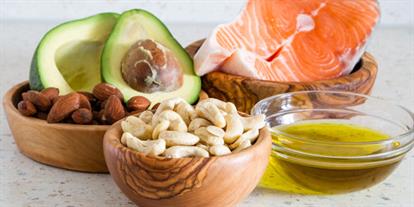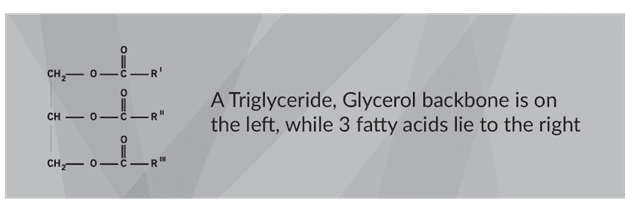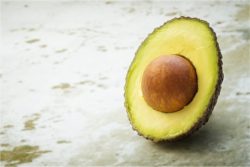What Are Fats? A Scientific Approach to Fats

What are fats? You may have heard from someone before, “healthy fats include chocolate and coconut oil.” But the same person who told you that also said saturated fats were unhealthy. Those saying “healthy fats” are confused because all fats, apart from the very few exceptions, are healthy. Those with a confusing, mixed message about fat are stuck in the past and trying to reconcile the observed benefits of a high fat intake with an aged rhetoric.
A family of molecules
Fats, also called lipids, is a very general heading for a family of molecules – much more complicated than unsaturated or saturated. Most dietary fats in our food come as triglycerides, and a triglyceride is a glycerol backbone attached to three fatty acids.

These fatty acids can be either saturated (SFA), monounsaturated (MUFA), or polyunsaturated (PUFA), thus earning the triglyceride its respective title of saturated fat, monounsaturated fat, or polyunsaturated fat that we see on food labels.
Structurally speaking, the difference between each of these 3 types is probably not as profound as you’ve imagined.

SFAs are simple. They are a straight line of carbons bonded to hydrogens, and all bonds are “single bonds,” permitting their straight orientation.
MUFAs are the exact same thing except 1, just 1, of the single bonds between two carbon atoms becomes a “double bond,” and this puts a little kink in the line. The MUFA starts off straight until the double bond when it changes direction and continues in that direction until it runs out of carbons and hydrogens.
Similarly, PUFA is like a MUFA, but with 2 or more double bonds, or “bends.”
How fat functions
As with most things, “function follows form,” and this is precisely why so much attention is given to things like saturated or unsaturated fats. So let us take a look at their different shapes in the image below. The SFA is straight, MUFA bends once, while PUFA bends twice (PUFA can bend two or more times). Note that the PUFA basically takes the form of saturated fat, just slightly wider, in this example.
These fatty acids serve many processes, including hormone production, vitamin absorption, cell composition, second messenger signals, myelination (the destruction of myelin causes multiple sclerosis), regulate inflammation, and regulate cell death, to name a few.
Now, a theory behind the negativity of saturated fat is linked to “cell fluidity.” Fatty acids make up our cell membranes, and we must transport other molecules in to and out of the cell. Saturated fats are kind of like wooden planks forming the broad side of a wall – not very porous, there are just a few gaps between the boards. If the board bends a bit, it creates a big hole for things to slip through. Bad for houses – good for cells (generally). Moreover, cholesterol (yes that cholesterol) increase cell fluidity when cell fluidity is low but decreases cell fluidity when it is too high, and our fats in the cell membrane are constantly moving around.
However, fatty acids are used for much more than forming cell membranes and regulating what goes into the cell.
So are saturated fats still “bad?” Not exactly. Increasing dietary saturated fat can actually lower circulating saturated fats (a risk factor for heart disease). Collectively, fats actually help to protect our cells, and that includes the cells of the heart. This is why a diet very high in fat in conjunction with a diet very low in carbohydrate will improve cardiometabolic health. The problem with the so-called “high-fat diet” that we’ve been told is so deadly is that it contains just as much or more carbohydrate than it does fat. Why? Because the outdated nutritional community believes carbohydrates are the base of human nutrition. They’re wrong – they don’t know how to let them go. It is our cultural, historical dependence on carbohydrate that keeps them in power (lobbyists for the big grain companies don’t help either). Fats can easily replace carbohydrate in the human diet.
Fats are fuel!
At this point we, as a species, have been tricked into thinking that carbohydrates are the most important macronutrient for fueling the body, but we were wrong! For decades, we have searched for the reason for our ailments and rapidly rising rates of obesity, heart disease, cancer, and the like, not knowing the answer has been right under our noses all along. We’ve pushed carbohydrate-based diets, and they’ve let us down tremendously. The research used to support this agenda has been weak, and the restriction of dietary fat has never outperformed the restriction of dietary carbohydrate in the human clinical research setting. As scientists, we very rarely get to speak in absolutes because there’s always a small chance to the contrary, but in this case, at this time, and to the best of our knowledge we can repeat, dietary fat restriction has never outperformed dietary carbohydrate restriction. In fact, when total dietary saturated fats are replaced with carbohydrate, cardiometabolic risk factors are exacerbated or unchanged, but replacement with medium-chain saturated fats, MUFA, or PUFA will lower these risks.
What are these sub-classifications of fats? Fats are not unlike carbohydrates in that both have sub-classifications for “digestion speed.” SFAs are metabolized more easily than MUFAs which are metabolized more easily than PUFAs because every double bond requires more steps to break them down. There are also more bonds to break for every pair of carbons present in the fatty acid, so their “length” is also a factor (the above examples have 16 carbons and will go through 9 metabolic cycles. If it had 8 carbons, it would undergo only 5 metabolic cycles, and the unsaturated fats would require additional steps when breaking the double-bond).
Based on the number of carbons, we can classify fatty acids by their size: short-chain, medium-chain, or long-chain. Short-chains are less than 6 carbons, medium-chains are 6-12 carbons, and long-chains are greater than 12 carbons. Shorter chains are easier to metabolize. Thus, our new hierarchy from easiest to most difficult to metabolize goes a little more like this:
4-carbon SFA
6-carbon SFA
8-carbon SFA
all the rest of the SFAs in ascending order
4-carbon MUFAs
6-carbon MUFAs
8-carbon MUFAs
all the rest of the MUFAs in ascending order
4-carbon PUFAs
6-carbon PUFAs
8-carbon PUFAs
all the rest of the PUFAs in ascending order
Odd numbers of carbons do exist and this also requires additional steps… but that is a whole other level of biochemistry.
Here is another thing that doesn’t make sense. We label unsaturated fat as “healthy,” but there’s one in particular which is generally frowned upon, and that is arachidonic acid. Its PUFA arrangement makes a U shape, and that is very unusual. Arachidonic acid is associated with inflammation and other unfavorable symptoms, but for perspective, this is just one very specific fat… at least 2/3 of individual carbohydrates (glucose and fructose for example) are definitely worse!
The unsaturated fats are also the only ones that can be trans fat. This comes from the chemical nomenclature for the type of double-bond the unsaturated fat has – it can either be cis or trans. Most are cis, and that is what is shown in the example above. Cis = Same, both hydrogens around the double bond are on the same side. Trans fat is when those hydrogens are on opposite sides of the double-bond (they would appear diagonal across the double-bond in the diagram). Ipso facto, trans fat (and arachidonic acid) can inadvertently receive the healthy fat classification. It definitely doesn’t make sense! Keep an eye out for “partially-hydrogenated” in your ingredients. If you see that, it contains trans fat – just not enough for the FDA to make them type in a number greater than 0 on their nutrition facts panel. Partially-hydrogenated oils are also much more harmful than natural trans fats, such as those found in meat and dairy.
Short-chain and medium-chain fatty acids
The last unique fat to discuss are short-chain and medium-chain fatty acids. These are always saturated fats, and they are very easily metabolized and readily form ketone bodies. Typically blood ketones are associated with diabetic ketoacidosis, and that can be true, but there is also nutritional ketosis, which is totally non-life-threatening (very much the opposite, in fact). Nutritional ketosis is highly associated with healthier body composition and lower inflammation.
When talking about ketones, we’re mostly concerned with butyrate. Butyrate becomes the ketone beta-hydroxybutyrate, which means there was a hydrogen molecule and an oxygen molecule added to the butyrate. Beta-hydroxybutyrate is water-soluble and very useful, as it can cross the blood brain barrier to fuel the brain, stimulate our peripheral tissues to absorb glucose out of the blood (yes, this fat can reduce blood glucose*), and it can quickly (very quickly as far as fats are concerned) be converted into fuel for muscle tissues as well.
*Lower blood glucose is associated with longer, healthier lives.
The final word
Remember – All Fats Are Healthy. Fats like fish oil or coconut oil are the healthiest fats.
Make sure to take a look at goFAT®, our new series of fat powders.
This is the first article in a three-part series about fat, brought to you by Compound Solutions.
Part 1 – What are Fats? A Scientific Approach to Dispelling Confusion Around Fat
Part 2 – The Truth About Fat
Part 3 – Fat as Fuel in Sports Performance





